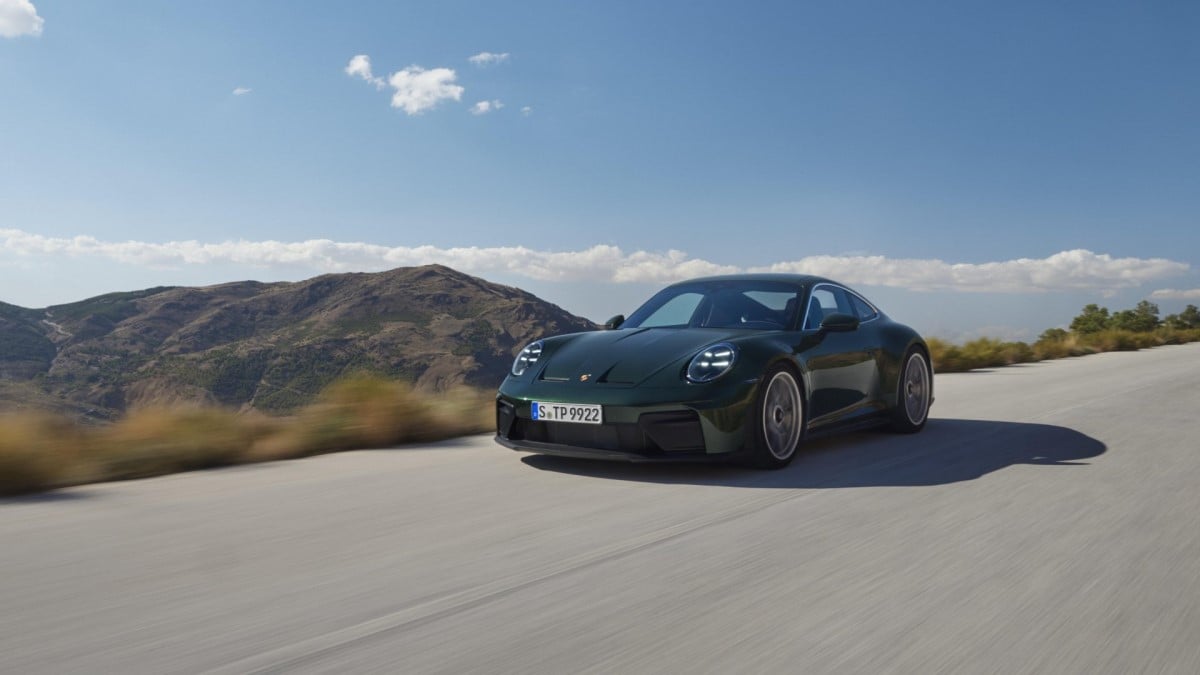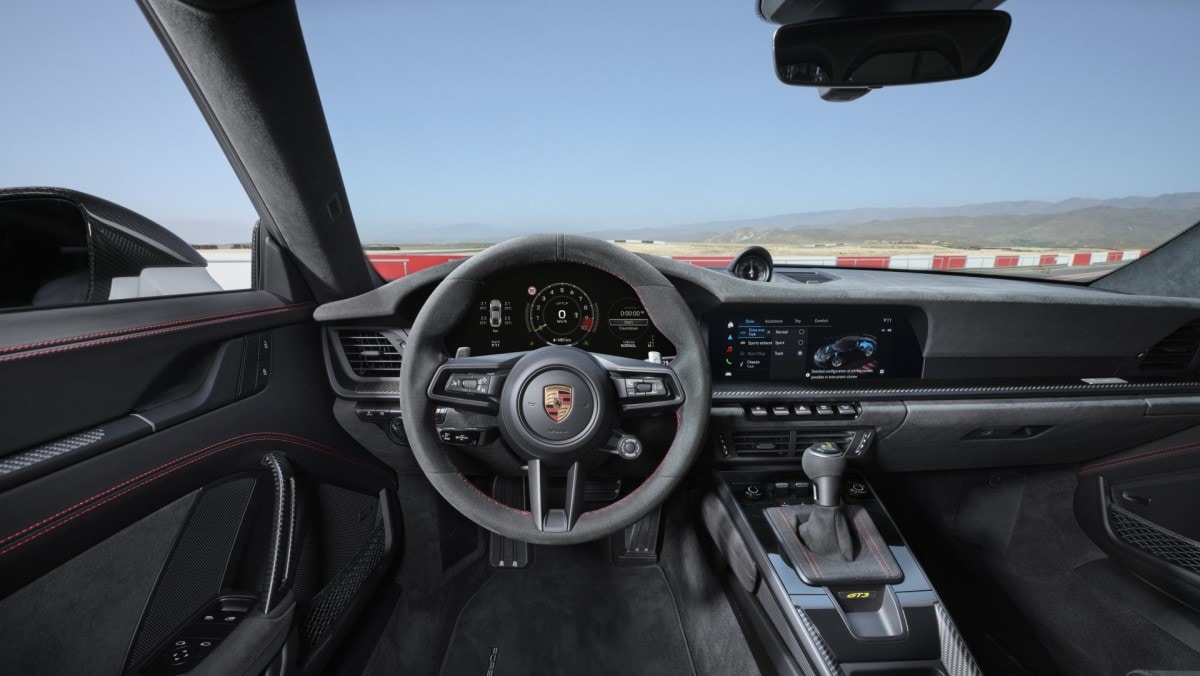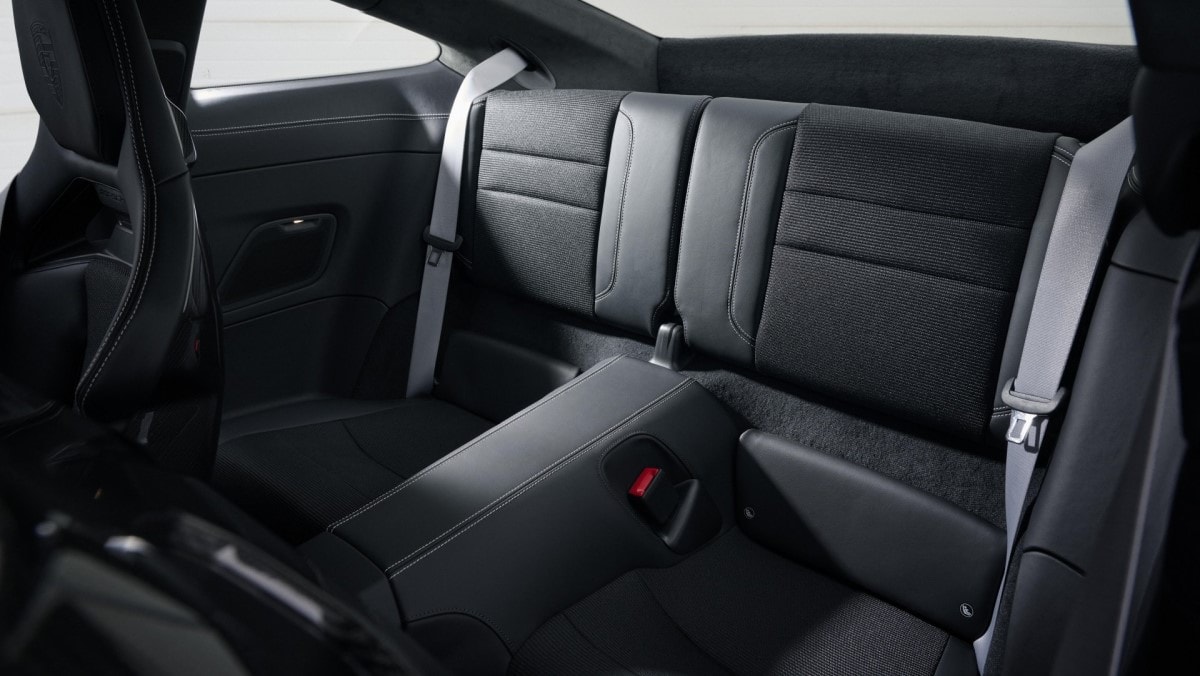Early in the electric car era, many of the world’s quickest cars bottle lightning, not fire. But there’s one dream car that still stands for the old ways. The 2025 Porsche 911 GT3 – the most powerful version of the most iconic sports car – is new in many ways. But old in some important ones.
Electric power has changed what’s possible for performance cars. The Rimac Nevera has obliterated every acceleration record – that thing goes 171 mph in reverse. The Lucid Air Sapphire can out-accelerate many Lamborghini and Ferrari hypercars, and it has four doors.
But, since its first appearance in 1999, the GT3 has represented the peak of what engineers can accomplish by making gasoline explode in a confined space.
The Porsche 911 is the sports car everyone knows by silhouette alone. In its slowest form, it’s brutally fast. The GT3 is its fastest form.
Porsche unveiled an updated version of the GT3 on Friday. As before, it comes in extrovert and introvert forms – a GT3 trim with a huge swan-neck wing and a GT3 with Touring Package trim that removes the wing to look just a bit less track-ready and more suited to the highway.
Both are as high-tech as a gas-powered car can be but retain some old-school thought where it counts.

502 Horsepower, No Turbo
That means no turbochargers, no superchargers, a stick, and classic rear-wheel drive (RWD). A 4.0-liter naturally aspirated flat-6-cylinder engine sits under the hood of every GT3. It makes 502 horsepower and sends 332 lb-ft of torque to the rear wheels, revving to an astonishing 9,000 rpm.
Both models come with either a 6-speed manual transmission or a 7-speed PDK automatic.
Engineers kept powertrain updates to a minimum. Porsche says both transmissions have an 8% shorter final drive ratio. That helps PDK-equipped models get from 0-60 mph in 3.2 seconds and top out at 193 mph. Manual-equipped versions do it in 3.7 with a driver up to the task and can manage an extra 2 mph top speed.
Suspension changes include “special teardrop-shaped trailing arms on the double-wishbone front axle. They increase downforce at high speeds and improve brake cooling.” The front ball joints sit lower than on last year’s car, which should reduce pitch under braking.

Emissions Rules Make This Challenging
The most impressive upgrades may have come in an area no driver will notice. Tough new European emissions standards make it challenging to build gas-powered cars this powerful. How did Porsche manage to do it legally?
With four times the emissions-scrubbing tech of an ordinary car. The company explains, “The 4.0-liter, naturally aspirated engine in the new 911 GT3 has been designed for current, significantly stricter exhaust standards and equipped with two particulate filters and four catalytic converters.”
We assume anyone buying one of these can afford to park it indoors.

Lighter Weight
“Carefully controlled curb weight contributes to the agile and direct handling of the 911 GT3,” the company says. It rides on lightweight aluminum wheels – silver in color this time instead of the bronze of last year – which reduce unsprung weight by 3.3 pounds.
Two available performance packages — the fabled Weissach Package and a Leichtbau (Lightweight) package — offer magnesium wheels instead, which save 20 pounds.
“A new 40 Ah lithium-ion lightweight battery also keeps weight in check by shaving off another roughly 9.9 pounds as compared to the standard 60 Ah of the previous model,” Porsche says.
The Weissach Package, offered on the GT3, also adds an anti-roll bar, coupling rods, and a carbon fiber roof, mirror shells, and side plates for the rear wing.
The Lightweight Package, offered on the Touring model, gets many of the same upgrades but foregoes the wing.
New Aerodynamics
Visual changes are minor, but there if you know what to look for. A redesigned front diffuser and lip spoiler are visible to others in traffic. New underbody air guides are not, but Porsche says they help increase downforce.
Buyers can add new Matrix Design LED headlights, which function as both daytime running lights and headlights. That “enables an enlarged air inlet area,” Porsche says, though it doesn’t explain whether the added airflow has any effect on performance.
“In the rear, the diffuser, air inlets, side plates on the wing, and the decklid are all redesigned.”
Optional Folding Carbon Fiber Seats
Performance car buyers are used to making one difficult choice. Many high-performance cars are offered with a comfort-oriented seat that folds to allow access to rear seats or storage areas, or a solid carbon fiber seat that saves weight but is barely adjustable.
Porsche has created carbon fiber sport seats that fold. They’re an option this year. “The seat is equipped with an integrated thorax airbag, electric height adjustment, and manual longitudinal adjustment; a three-stage seat heater is standard,” the company says.
The headrest pads, uniquely, can be removed to make more helmet space.

Rear Seats? They’re an Option
Touring edition buyers get another new seating option – rear seats. Porsche explains, “Fulfilling a longstanding customer request, rear seats are now available as an option for the first time.” They will not be offered on the track-ready GT3 model with the big wing.
A Sign of Dedication
This car’s existence in the 2025 model year is almost a miracle. In a year when even Lamborghini is retiring its internal combustion cars, Porsche has brought out another version of arguably the most iconic gas-powered sports car.
The company plans to keep going. It now sells an all-electric Taycan sedan and Macan SUV, a plug-in hybrid Cayenne, and plans more electric models. But leadership has promised to keep the 911 gas-powered even as it pursues carbon neutrality.
The 2025 Porsche 911 GT3 will start at $224,495, including the $1,995 destination charge, and is expected to reach Porsche dealers next summer.








